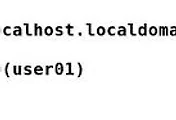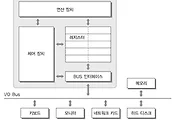사용 시스템 : Centos 5.5 (final)
Name Service Look up CMD
ⓐ nslookup CMD -> # nslookup www.daum.net
ⓑ host CMD -> # host www.daum.net
ⓒ dig CMD -> # dig www.daum.net
NAME dig - DNS lookup utility SYNOPSIS dig [@server] [-b address] [-c class] [-f filename] [-k filename] [-m] [-p port#] [-t type] [-x addr] [-y name:key] [-4] [-6] [name] [type] [class] [queryopt...] dig [-h] dig [global-queryopt...] [query...] DESCRIPTION dig (domain information groper) SIMPLE USAGE A typical invocation of dig looks like: dig @server name type server is the name or IP address of the name server to query. This can be an IPv4 address in dotted-decimal notation or an IPv6 address in colon-delimited notation. When the supplied server argument is a hostname, dig resolves that name before querying that name server. If no server argument is provided, dig consults /etc/resolv.conf and queries the name servers listed there. The reply from the name server that responds is displayed. name is the name of the resource record that is to be looked up. type indicates what type of query is required — ANY, A, MX, SIG, etc. type can be any valid query type. If no type argument is supplied, dig will perform a lookup for an A record. |
Example - dig 명령어
# dig @168.126.63.1 kornet.net ANY
# dig @168.126.63.1 example.com ANY
# dig @168.126.63.1 google.com ANY
# dig @168.126.63.1 kornet.net MX /* kornet.net. NS ns.kornet.net */
# dig @168.126.63.1 kornet.net NS /* kornet.net. NS ns.kornet.net */
# dig @168.126.63.1 www.kornet.net A /* www. kornet.net A 211.216.50.150 */
# dig @168.126.63.1 211.216.50.150 PTR /* 150 PTR ns.kornet.net */
# dig @168.126.63.1 version.bind chaos txt /* version.bind txt "hello" */
# dig www.google.com -> 이것이 가장 일반적인 방법. 정보 상으로는 가장 자세하게 볼 수 있다.
nslookup 명령어는 어떤 운영체제나 상관없이 들어있다. -> 공통적.
'보안과정 > 참고' 카테고리의 다른 글
| nc(netcat)명령어 사용법 (0) | 2017.11.28 |
|---|---|
| xinetd 방식에 대하여 (0) | 2017.11.28 |
| setreuid 명령어 (0) | 2017.11.28 |
| 어셈블리 언어(Assembly) (0) | 2017.11.27 |
| 특수 퍼미션 (0) | 2017.11.27 |



